Red bay snook - Petenia splendida
Scientific name: Petenia splendida
Common name: Red bay snook
Family: Cichlidae
Usual size in fish tanks: 30 - 35 cm (11.81 - 13.78 inch)
014
Recommended pH range: 6.8 - 7.8
Recommended water hardness: 5 - 20°N (89.29 - 357.14ppm)
0°C 32°F30°C 86°F
Recommended temperature range: 25 - 28 °C (77 - 82.4°F)
The way how these fish reproduce: Spawning
Where the species comes from: Central America
Temperament to its own species: peaceful to females
Temperament toward other fish species: aggressive to smaller
Usual place in the tank: Middle levels
Overview
Petenia splendida, known as the Red Bay Snook, is a large predatory cichlid native to Mexico, Guatemala, and Belize. Its streamlined body, extended jaws, and variable coloration (ranging from silver-gray to deep red morphs) make it one of the most striking Central American cichlids. In the wild it inhabits rivers, lagoons, and lakes with slow to moderate flow.
Care & Tank Setup
- Tank size: A single adult requires 450–600 l / 120–160 gal. Pairs or communities demand larger systems (750+ l).
- Water parameters: pH 6.8–7.8, hardness 5–20 °dGH, temperature 25–28 °C (77–82 °F). Ensure stable, clean water with strong filtration.
- Aquascape: Open swimming areas combined with driftwood, large rocks, and sturdy plants (if any). Floating cover reduces skittishness.
- Filtration: High-output filtration with additional mechanical support. Perform 30–40% weekly water changes.
Diet & Feeding
A true predator with a capacious mouth; opportunistic in the wild, feeding on fish, insects, and crustaceans.
- Staples: High-quality carnivore pellets and large cichlid sticks.
- Protein sources: Fish fillet, prawns, earthworms, mussels, crickets.
- Live/frozen: Can be offered occasionally but avoid routine feeder fish (disease risk and poor nutrition).
- Behavior: Bold individuals may learn to accept food directly from the keeper’s hand.
Behavior & Compatibility
- Conspecifics: Semi-aggressive; juveniles may cohabit, but adults require space and hierarchy. Pairs can be stable if bonded.
- Other fish: Do not keep with small or slender-bodied fish — they will be eaten. Best companions are large, robust Central American cichlids, armored catfish, or similarly sized fish.
Sexing
Sexual dimorphism is minimal. Males may reach slightly larger sizes and sometimes develop more elongated fins, while females are generally rounder-bodied.
Breeding
Substrate spawners that form pairs. Provide flat rocks or slate for spawning sites. Eggs are pinkish when laid and hatch in 3–4 days. Fry become free swimming in about a week and can be fed newly hatched brine shrimp and crushed flakes. Both parents guard the eggs and fry, though aggression increases during spawning.
Lifespan
With proper care, Red Bay Snooks live 10–12 years. Exceptional individuals may reach 15 years.
Origin
Central America: found in the river systems of Mexico (Usumacinta, Grijalva), Belize, and Guatemala. Prefers calm rivers, lagoons, and lakes with abundant cover.
Short description
Petenia splendida is a large, intelligent predator requiring ample space, excellent filtration, and careful choice of tankmates. Its impressive size and bold behavior make it a centerpiece species for experienced aquarists with very large aquaria.
At-a-Glance (Care Box)
- Size (captive): 30–35 cm (12–14"); wild up to 50 cm
- Temperament: Semi-aggressive; predatory
- pH: 6.8–7.8 | GH: 5–20 °dGH
- Temp: 25–28 °C (77–82 °F)
- Tank: Single ≥ 450 l / 120 gal; pairs ≥ 750 l / 200 gal
- Diet: Predatory carnivore (pellets, fish, shrimp, worms, insects)
- Breeding: Substrate spawner; biparental care
- Lifespan: 10–12 years (rarely up to 15)
Picture
Bought by aqua-fish.net from jjphoto.dk.
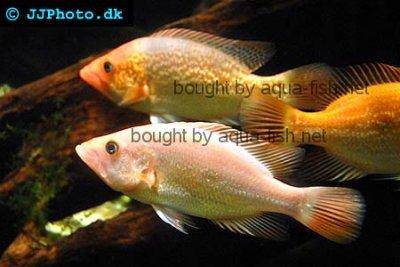

 Thread-finned
Thread-finned 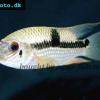 Acara
Acara  Yellow
Yellow  Patrick's
Patrick's  Blue
Blue  Green
Green 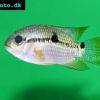 Acara
Acara  White
White  Compressed
Compressed 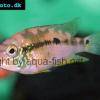 Pastel
Pastel  Midas
Midas  Red
Red  Bluemouth
Bluemouth  False
False 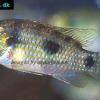 African
African  Agassiz's
Agassiz's  Banded
Banded 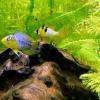 Yellow
Yellow  Cockatoo
Cockatoo  Blue
Blue  Blackstripe
Blackstripe  Highfin
Highfin  Redstripe
Redstripe  Threadfinned
Threadfinned  Macmaster’s
Macmaster’s 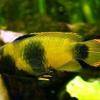 Panda
Panda  Norbert’s
Norbert’s 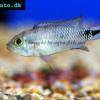 Blue
Blue  Thin-line
Thin-line  Three-striped
Three-striped  Viejita
Viejita 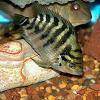 Flier
Flier  Archocentrus
Archocentrus  Convict
Convict  Seven
Seven  Spiny
Spiny  Oscar
Oscar  Sunshine
Sunshine  Chitande
Chitande  Firebird
Firebird  Midnight
Midnight  Lake
Lake  Sunshine
Sunshine  Aulonocara
Aulonocara  Nyasa
Nyasa 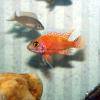 Ruby
Ruby  Grants
Grants  Aulonocranus
Aulonocranus  Chameleon
Chameleon  Benitochromis
Benitochromis  Orinoco
Orinoco  Yellow
Yellow 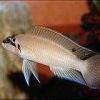 Brichard’s
Brichard’s  Guenther’s
Guenther’s  Southern
Southern  Cichla
Cichla 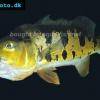 Peacock
Peacock  Chiseltooth
Chiseltooth  Bolivian
Bolivian  Red
Red  Many-pointed
Many-pointed  Jack
Jack  Red
Red  Three
Three 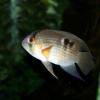 Keyhole
Keyhole  Azureus
Azureus  Red
Red  Jackson’s
Jackson’s  Crenicichla
Crenicichla  Honduran
Honduran  Blue-eye
Blue-eye  Afra
Afra 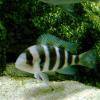 Frontosa
Frontosa  Slender
Slender  Malawi
Malawi  Chequerboard
Chequerboard  Checkerboard
Checkerboard  Malawi
Malawi  Ectodus
Ectodus  Tanganyika
Tanganyika  Canara
Canara  Green
Green  Rostratus
Rostratus  Pearl
Pearl 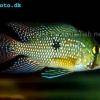 Geophagus
Geophagus  Yellowhump
Yellowhump  Suriname
Suriname  Redhump
Redhump  Red
Red  Dority’s
Dority’s  Argentine
Argentine 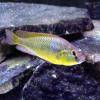 Burton’s
Burton’s  Victoria
Victoria 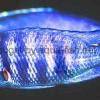 Haplochromis
Haplochromis  Jewel
Jewel  Banded
Banded 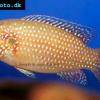 Lifalili
Lifalili  Lowland
Lowland  Texas
Texas  Pantano
Pantano  Severum
Severum  Banded
Banded 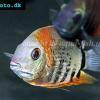 Severum
Severum  Rainbow
Rainbow  Parrot
Parrot  Chocolate
Chocolate  Brown
Brown  Marlieri
Marlieri  Golden
Golden  Striped
Striped  Masked
Masked 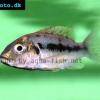 Konye
Konye  Blue
Blue  Trewavas
Trewavas  Electric
Electric  Dwarf
Dwarf  Redbreast
Redbreast  Lamprologus
Lamprologus  Gold
Gold 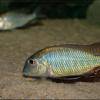 Greenface
Greenface 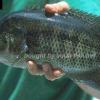 Mayan
Mayan  Aurora
Aurora  Blue
Blue  William’s
William’s 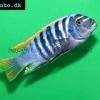 Zebra
Zebra  Malawi
Malawi  Blue
Blue 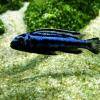 Blue
Blue  Mbuna
Mbuna  Parallel
Parallel  Purple
Purple  Flag
Flag  Bolivian
Bolivian  Ram
Ram  Basket
Basket 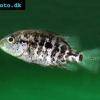 Haitian
Haitian  Zebra
Zebra  Striped
Striped  Neolamprologus
Neolamprologus  Brevis
Brevis  Fairy
Fairy 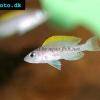 Neolamprologus
Neolamprologus  Cylindricus
Cylindricus  Hecq’s
Hecq’s  Neolamprologus
Neolamprologus  Lemon
Lemon  Mustax
Mustax  Daffodil
Daffodil  Six-bar
Six-bar  Five-bar
Five-bar  Marbled
Marbled 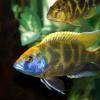 Giraffe
Giraffe  Blue
Blue  Sulphurhead
Sulphurhead  Wolf
Wolf  Jaguar
Jaguar  Blue
Blue  Marakeli
Marakeli  Madagascar
Madagascar  Pinstripe
Pinstripe  Pelmatochromis
Pelmatochromis  Kribensis
Kribensis 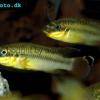 Striped
Striped  Deepwater
Deepwater  Fenestratus
Fenestratus  Nichols’
Nichols’  Southern
Southern  Bumble
Bumble  Demason’s
Demason’s  Slender
Slender  Red
Red  Mbuna
Mbuna  Malawi
Malawi  Kenyi
Kenyi  Powder
Powder  Altum
Altum  Angelfish
Angelfish  Angelfish
Angelfish 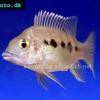 East
East  Juba
Juba  Earth
Earth 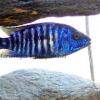 Electric
Electric  Azure
Azure 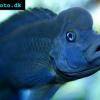 Lionhead
Lionhead  Discus
Discus  Blue
Blue  Red
Red  Zebra
Zebra  Brichard’s
Brichard’s  Blue
Blue  Firemouth
Firemouth  Zebra
Zebra  Yellow
Yellow  Blue
Blue  Dwarf
Dwarf  Blunthead
Blunthead 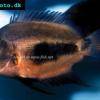 The
The  White
White  Twoband
Twoband  Fenestratus
Fenestratus  Window
Window  Tailbar
Tailbar  Black
Black  Redhead
Redhead 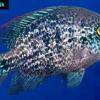 Oaxaca
Oaxaca  Xenotilapia
Xenotilapia